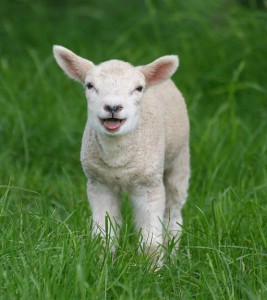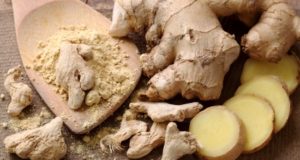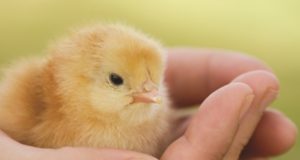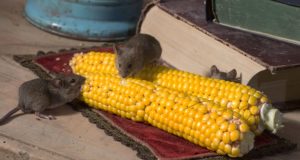Sheep are a great type of livestock to have on a homestead or small farm. They can provide your family with wool and a source of income or even a source of meat. Furthermore, they are a great learning experience for your kids, especially at lambing time. Raising lambs is not typically difficult, but there are many potential health problems to look out for. Practice good hygiene, make sure your ewes and lambs have adequate nutrition and the right vaccines, and educate yourself on the things that can go wrong in order to minimize your losses.
Arthritis
 Lambs are susceptible to arthritis acquired through a bacterial infection, most commonly from Erysipelothix rhusiopathiae. About two to four days after infection, the lamb will have swollen, hot, and painful joints. A large dose of antibiotics may cure the infection and resulting arthritis, but prevention through cleanliness is better. Lambs are vulnerable to this infection soon after birth, during docking and castration, and if they get wounds during shearing.
Lambs are susceptible to arthritis acquired through a bacterial infection, most commonly from Erysipelothix rhusiopathiae. About two to four days after infection, the lamb will have swollen, hot, and painful joints. A large dose of antibiotics may cure the infection and resulting arthritis, but prevention through cleanliness is better. Lambs are vulnerable to this infection soon after birth, during docking and castration, and if they get wounds during shearing.
Successfully Raise Farm Animals With The Backyard Homestead Guide…
Bacterial Meningitis
This infection may occur occasionally in lambs, most likely in those that are between two and four weeks of age. Symptoms of meningitis include hunger, depression, holding the head rigidly downward, and failure to follow the mother. Successful treatment with antibiotics is spotty. Lambs who are most susceptible to the infection are those who did not get antibodies from colostrum.
Border Disease
Also known as fuzzy lamb syndrome or hair-shaker disease, Border disease is caused by a virus and affects newborn lambs. They tremble uncontrollably and have a hairy coat. The lamb may not even make it out, as they are often aborted by the ewe. The most likely cause of Border disease is the passing on of the virus by new additions to the flock. If you are not bringing in new animals, you should not have to worry about this infection. There is no treatment for Border disease.
Enterotoxemia Type C
There are a few types of enterotoxemia caused by a bacterial infection. These bacteria live in the soil and often in the guts of healthy animals. Enterotoxemia type C infects very young lambs and causes bleeding in the small intestine. The infection often follows a change in feeding. Treatment of this disease is not very helpful, so it is best to vaccinate the ewe before lambing time.
Enterotoxemia Type D
Type D, or overeating disease, is one of the most common diseases in sheep throughout the world. The infection is likely to strike lambs that are growing very quickly. When lambs eat too much, too fast, the bacteria that are already present in their guts suddenly proliferate, causing a dangerous infection. As with type C, a vaccination in the ewe is recommended. You should also monitor the feeding of your lambs, especially after one month of age, and try to avoid overfeeding.
Copper Deficiency
While sheep are susceptible to copper toxicity, lambs are more likely to be copper deficient because milk is low in copper. If they are deficient, they will show signs such as difficulty standing or walking. You can correct the problem by administering a copper supplement like copper sulfate to the affected lambs.
Scours
Scours is another name for diarrhea and is often a symptom of an illness rather than an illness itself. If you see diarrhea in your lambs, you should be considering what might be causing it. Possible reasons for scours include infection, dietary changes, and stress. Testing a sample will identify any infections or parasites. Consult with a veterinarian to determine the reason for diarrhea and in the meantime give the lamb fluids with electrolytes to avoid dehydration.
E. coli Scours
Diarrhea that is caused by the E. coli bacterium is common in very young lambs when conditions are unsanitary. It is also called watery mouth because the lambs have cold mouths and they salivate excessively. An affected lamb can be treated by hydrating with fluids and a course of antibiotics, but the best medicine is prevention. If the living conditions are clean, this infection should not be a concern.
Goiter
A goiter occurs when the thyroid gland in the neck swells to a larger size. You will see this in a lamb if its neck appears larger or has a lump sticking out from it. Lambs born with a goiter often have no wool and are weak and at risk of dying from starvation. If the goiter is not too advanced, the lamb can survive. The cause of a goiter is iodine deficiency in the ewe’s diet. To avoid goiters, you can add iodized salt to the ewe’s feed while she is gestating. A milk goiter is different and occurs sometimes in the lambs of hair sheep that are well fed. It is not a health concern.
Scabby Mouth
This viral infection is highly contagious and causes painful scabs around the mouth. Treatment rarely helps, but the condition usually runs its course in a few weeks. Vaccines are available to prevent the infection.
Foot Scald
Foot scald is a bacterial infection that most often occurs in lambs that are in a wet spring pasture with long grass. Affected lambs will act very lame. You can treat the infection with an antibiotic spray. If you have several lambs infected, use a foot bath to prevent is spread. You can also prevent the initial infection by providing the lambs with shorter pasture.
Hypothermia
Hypothermia is a very common cause of death in young lambs. They can become chilled and die if their body temperature dips to 98 degrees or below. Lambs cannot regulate their temperature for the first day and a half and need to be kept warm. You can prevent losses due to hypothermia by making sure the lambing area is well-sheltered and warm, confining the ewe and lamb for a day or two so that they bond, and making sure the lamb is getting adequate amounts of colostrum. If you suspect a lamb is too cold, check its temperature. If it is too cold, remove it from the ewe and keep it warm with a warming box until its temperature returns to normal, above 102 degrees.
Acidosis
Young lambs are susceptible to acidosis, which is a build-up of acid in the gut and bloodstream from overfeeding on grains. Untreated, this can be fatal. The affected lamb will have an upset stomach, diarrhea, and possibly a fever. To treat acidosis, neutralize the acid. Give the lamb water with baking soda by drenching their feed with it. You can also give it aspirin to reduce the fever.
Internal Parasites
Lambs are susceptible to infection by internal parasites such as cryptosporidium and coccidia. Lambs may ingest the eggs of cryptosporidium and become ill with diarrhea and depression. They often die of dehydration or hypothermia. If you can keep the lamb warm and hydrated, it can survive, but it will be susceptible to relapse. Young lambs are also vulnerable to coccidia, especially during the stress of weaning. It causes damage to the small intestines and poor absorption of nutrients. Coccidiosis can be treated, but prevention is better. Practice good hygiene to avoid this infection.
Joint or Navel Ill
Lambs up to one month of age can get this infection, which is characterized by lame, hot, and painful joints, fever, and dullness. The navels may also be swollen and infected looking. This can be treated with penicillin, but can also be prevented with good hygiene and by dipping the navel in gentle iodine right after lambing.
Ringworm
Also known as club lamb fungus, ringworm is a contagious fungal infection of the skin. This most often occurs with show lambs because they are sheared often and the fungus is passed on by the shears. The infections presents as lesions mostly on the back, neck, and head. You can treat it with a fungicide, but take care. The infection can be passed to people.
Pneumonia
Lambs are very vulnerable to pneumonia, especially when there is dust in the air, a build-up of ammonia, or sudden weather changes. It is most often fatal, and even when treated, the lamb may have permanent lung damage. An affected lamb will show labored breathing and fever. To prevent pneumonia, especially when you are housing your lambs, practice good cleaning habits and be sure that there is good ventilation.
Scrapie
Scrapie is a disease that affects a lamb’s central nervous system. There is no treatment, and lambs with scrapie will always die. A lamb can get this disease when it comes into contact with the birthing fluids and placenta; however, it is very rare. Scrapie belongs to the same class of diseases as mad cow and chronic wasting disease, and for that reason, it is a matter of regulatory concern. Its incidence is very low in the U.S.
White Muscle Disease
This degenerative disease causes the cardiac and skeletal muscles of lambs to deteriorate and is caused by vitamin E or selenium deficiencies or a deficiency in both nutrients. Symptoms include stiff hind legs, tucked in flanks, and an arched back. It can be treated by injecting selenium or vitamin E. To prevent white muscle disease, be sure that your feed is providing the ewe and the lambs with adequate amounts of these nutrients.
Spider Syndrome
Spider syndrome is something you are only likely to see if you have show sheep. It is a genetic condition that causes lambs to have severely malformed bones. If you purchase sheep, they should come from a reputable source where the animals are screened for such disorders.
©2012 Off the Grid News
 Off The Grid News Better Ideas For Off The Grid Living
Off The Grid News Better Ideas For Off The Grid Living




